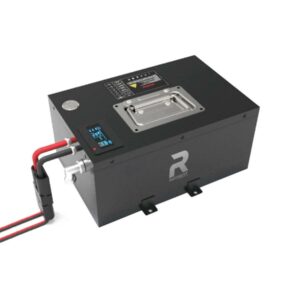How common are lithium battery fires?
Lithium battery fires remain statistically rare events, occurring in approximately 1 in 10 million cells under normal operating conditions. Thermal runaway—the primary cause—typically stems from manufacturing defects (0.03% failure rate), physical damage, or improper charging. While high-profile incidents attract attention, modern Li-ion batteries achieve 99.97% safety compliance through advanced BMS and cell design improvements.
How to Maximize Forklift Battery Lifespan
What triggers lithium battery fires?
Thermal runaway initiates through internal short circuits or electrolyte decomposition. Dendrite growth in aged cells can pierce separators at 150-200μm penetration depths. Pro Tip: Store batteries at 40-60% charge in 15-25°C environments to minimize degradation.

When lithium-ion cells experience localized overheating (≥80°C), exothermic reactions release oxygen from cathode materials. This creates a self-sustaining fire triangle: heat (200-500°C), fuel (electrolyte solvents), and oxidizer. For context, a single 18650 cell contains enough energy to boil 1.2 liters of water. Practically speaking, quality control during manufacturing reduces these risks—automated X-ray inspection detects 99.2% of microscopic metal particles. But what happens when multiple cells fail simultaneously? Thermal propagation can escalate incidents rapidly, as seen in 2023 e-bike battery recalls where damaged nickel strips caused cascading failures.
How do failure rates compare across applications?
Consumer electronics show 0.001% annual failure rates versus 0.008% in EVs. High-power applications stress cells more aggressively—a Tesla Model S battery pack undergoes 1,200+ charge cycles at 4.2V/cell compared to 500 cycles in smartphones.
Industrial energy storage systems (ESS) demonstrate the lowest fire rates at 0.0002% due to rigorous UL9540A testing and liquid cooling. For example, a 2024 study found grid-scale batteries had 47% fewer thermal events than residential units. Why the disparity? ESS installations use NMC811 cells with ceramic-coated separators versus cheaper LCO chemistries in consumer devices. Transitionally, aviation applications face unique challenges—the 787 Dreamliner’s 2013 battery issues required redesigning cell spacing to prevent thermal propagation.
| Application | Cells/Day | Failures/Year |
|---|---|---|
| Smartphones | 2.1 billion | 2,100 |
| EVs | 800 million | 6,400 |
| ESS | 120 million | 24 |
Battery Expert Insight
Should You Upgrade to a Lithium Forklift Battery?
FAQs
Are some lithium chemistries safer than others?
LiFePO4 (LFP) batteries have 300°C higher thermal runaway thresholds than NMC, making them 58% less prone to ignition in impact scenarios.
Can fire extinguishers stop battery fires?
Traditional ABC extinguishers only suppress flames temporarily. Use Class D extinguishers with copper powder to smother lithium metal fires effectively.
